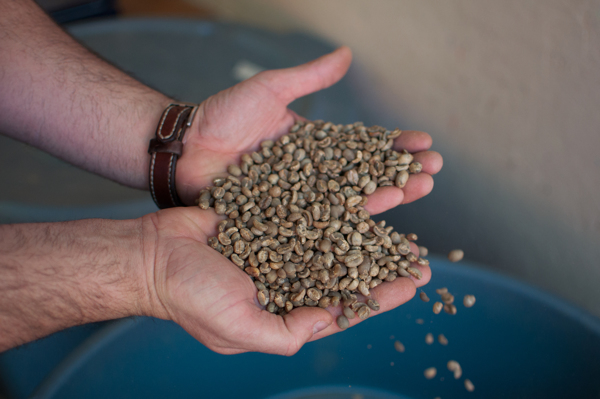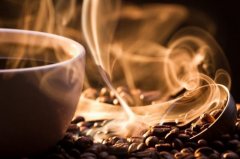The important difference between boutique coffee and commercial coffee the characteristics of fine coffee

What are boutique coffee beans? What is the difference between fine beans and commercial beans?
"Fine Coffee", translated from English Specialty Coffee, is a proper noun that does not reach the meaning of the word but does not have a better translation for the time being. it refers to "coffee grown in a special geographical and microclimate environment with special regional flavor". The term Specialty Coffee was first put forward by Ms. Erna Knustsen of the United States in 1974. after the establishment of the American Fine Coffee Association (Specialty Coffee Association of America, abbreviated as SCAA) in 1982, the concept of Specialty Coffee was defined in detail, and the whole process of coffee "from seed to cup" was strictly regulated. According to the SCAA scoring standard (out of 100), the cup test score of more than 80 points can be called "boutique coffee".
Corresponding to the "boutique coffee" is the bulk trade "commercial coffee".
Boutique coffee wins with high-quality "flavor", the quantity is relatively small; the quantity of commercial coffee is very large, and wins by quantity.
Which varieties of coffee beans are more recognized by Chinese customers?
Mantenin in Indonesia and Yega Xuefei in Ethiopia are two "species" of coffee beans with high recognition among Chinese consumers. The former refers to Arabica coffee beans from the Indonesian island of Sumatra, mainly including Tibika and Kadim, while the latter refers to Arabica coffee beans from the small town of Yega, Ethiopia, which is native to Ethiopia.
Ordinary consumers know little about the concept of "variety" of coffee beans, and it is easy to be confused.
From a species point of view, coffee (trees, fruits, beans) can be divided into Arabica coffee, Robasta, Liberia and Essella. Almost all the coffee beans on the market are different varieties under the first two species, and the latter two species are difficult to find because of their lack of commercial value. There are many cultivated varieties under Arabica species, such as Tybika, Bourbon, Kaddura, Kaduai, Marago Polar, Pacamara, Mondonova, sl28, sl3, Rosa and so on. At present, only Robusta is the commercial cultivated variety under Canifra species.
Chinese coffee consumers are also familiar with Colombian and Brazilian coffee beans, which generally refer to Arabica beans grown in Colombia and Brazil.
How important is roasting to coffee?
It's very big. If the process of coffee "from seed to cup" is divided into three links: "coffee planting", "coffee roasting" and "coffee making", the impact of each link on the final coffee drink as a whole, coffee planting accounts for 60%. Coffee roasting accounts for 30%, coffee production accounts for 10%, the quality of raw beans obviously plays the most important role. Because if the quality of raw beans is poor, coffee roasting and coffee making basically have no effect. Only when the quality of raw beans is good, the potential flavor characteristics of raw beans can be discovered in coffee roasting, and the flavor and flavor characteristics of raw beans can be revealed in the process of coffee making.
If you look at the importance of coffee planting, coffee roasting and coffee making alone, their respective importance is 100% important. Because no matter how good the quality of raw beans is, once coffee roasting fails, there is almost no way to make coffee; and even if raw beans are of good quality and roasting is successful, we still can't get a good drink once we fail.
Compared with the role of coffee roasting and coffee production, coffee roasting determines the flavor level, thickness, sweetness, taste and other aspects of coffee drinks to a greater extent. If the roasting is correct, the coffee making process has better leeway, and if the roasting fails, the coffee making is basically at a loss.
Important Notice :
前街咖啡 FrontStreet Coffee has moved to new addredd:
FrontStreet Coffee Address: 315,Donghua East Road,GuangZhou
Tel:020 38364473
- Prev

Reveal the world's most expensive coffee making process, do not want to drink! Jamaica Blue Mountain Coffee Animals
Jamaica Blue Mountain Coffee is the most expensive coffee in the world. Wrong answer. The most expensive coffee is made in Sumatra, Indonesia, and is stained with some kind of animal droppings. It costs as much as $300 per pound, 10 times more expensive than Blue Mountain coffee. This rare coffee is called Kopi Luwak, also known as Sumatran civet coffee, after a unique fermentation process, flavor and general
- Next

What are the nine steps to distinguish between "good coffee" and "bad coffee"? What is good coffee?
How to judge good coffee and bad coffee? Finally, an expert was willing to make it clear! Clancy Rose, winner of the 2015 U.S. Coffee Championship Roaster's Choice Award, teaches you how to distinguish good coffee from bad coffee in nine ways: in addition to the differences in coffee beans themselves, coffee growth environment climate, aroma, drying process, storage time, etc. all have an impact on coffee quality. Coffee beans grow.
Related
- What is the meaning of lactic acid fermentation with coffee bean treatment?
- How to judge the state of foam by sound?
- How does the latte pull out the unicorn pattern? Come to get for a little trick to improve the flower pull!
- Will flower pulling affect the taste of the latte?
- Do you know the history of coffee?
- The difference between honey treatment and sun washing what is raisin honey treatment?
- What kind of milk can a novice use to make coffee foam to keep the foam longer? The correct method and skills of milking tutorial sharing
- Why do washed coffee beans taste sour? Flavor characteristics of washed Coffee
- Introduction to the skill of how to practice the size and height of water injection around the circle of hand-brewed coffee
- How do beginners practice coffee flower drawing from scratch?

